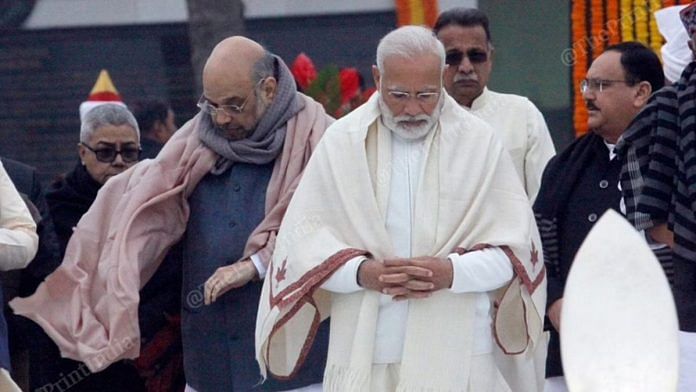Seldom does a scheme with a fanciful name live up to its name and that too with such devastating fidelity as Agnipath. It has delivered on its name almost instantaneously by lighting fires across India. The inflamed passions of the unemployed found expression and targeted the Narendra Modi government’s defence reform that was officially touted to provide an opportunity to the youth to serve the nation.
The irony was striking, as potential ‘Agniveers’ felt that the government had made matters worse for them and taken away the main attraction of a government job — the stability of employment and the promise of a pension. The scheme assures four years of service in the armed forces for selected youths but provides only an uncertain 25 per cent chance for permanent absorption that would provide lifelong pension and other benefits like healthcare and canteen services that accrue to veterans. Layered atop a two-year freeze in Army recruitment, which was shackled by an age limit of 17-21 years, some of the youths became ineligible and their hopes of donning the uniform were dashed.
Why makeshift measures don’t work
In an attempt to douse the violence, the Modi government immediately reacted and announced several support schemes that include 10 per cent reservations for posts in the Ministry of Defence, Central Armed Police Forces, and Assam Rifles and support for employment opportunities in state police and merchant navy. It also included some educational and skill development measures and promises of jobs in the corporate sector. On 17 June, a one-time waiver was announced to extend the age limit to 23 years, even when it would negatively impact, to some degree, the lowering of the age profile of the armed forces — one of the objectives of the reform.
Tap into human potential
The opportunity for India under Agnipath lies in getting the best human resources to serve the Army with lifelong employment. This can only be achieved if other ministries cooperate at the Central and state government levels. An assured systematic flow from the armed forces to the rest of the government has to be at the heart of the scheme. Without this, the quantum of aspirants may still be large, but it will suffer from a major infirmity. Quality-wise, the source of recruitment would shrink, implying the under-leveraging of the available potential.
That India has largely failed to tap into human potential for progress is a no-brainer. Agnipath is, in policy terms, directed correctly. For the country’s defence forces, we do require spirited and educated youths selected through a workable and equitable recruitment system at the all-India level.
So far, the scheme has left the recruitment system untouched. It is obvious that the mechanics of selection in the hands of the Army, Navy and Air Force will need to be reviewed for their suitability to ensure that the selection standards meet the military requirements.
The challenge is that military leaders must decide and implement the selection criteria for a recruiting methodology that will best serve the implementation of the scheme. Ideally, the means adopted must provide equal opportunities for any particular post in the armed forces. For instance, at the national level, the recruitment of vehicle drivers as a trade should be open to all. A person recruited as a soldier general duty in the Army should not be disadvantaged on regional, caste, or religious grounds.
This is easier said than done and would certainly call for a radical review of the existing recruitment system. To devise one in just three months is ambitious, but it has to be done speedily since it is the start line of the scheme. The responsibility for this step lies with the military leadership.
Also read: India’s increasingly-violent young cohort is its biggest national security problem
Where the challenge lies
The success of Agnipath can only be achieved if a viable whole of the government’s approach is pursued and achieved. To the author, the direction of change wrought by the scheme needs support because it holds promises of preserving military effectiveness, reducing pension bills and transitioning combat units to all-India class composition. For sure, such savings from pensions will not provide financial resources to modernise the armed forces in the near future, since it will only be after 16 years when soldiers inducted till now would retire. The preservation of military effectiveness while adopting and implementing the scheme is where the challenge would lie.
The opportunity for providing a short tenure career in the armed forces and integrating it with the employment demand has been correctly identified and sought to be leveraged. Implementation will require a change of mindset in the military and across various entities and levels of the government. It will be a mindset that will have to overcome the pull of turf protection and beliefs, and one that will resist changes at the cost of the higher needs of the nation.
Also Read: With Agnipath, Modi govt’s shock & awe doctrine may have misfired a vital reform, yet again
MHA must lead the way
Lt Gen (Dr) Prakash Menon (retd) is Director, Strategic Studies Programme, Takshashila Institution; former military adviser, National Security Council Secretariat. He tweets @prakashmenon51. Views are personal.
(Edited by Humra Laeeq)






